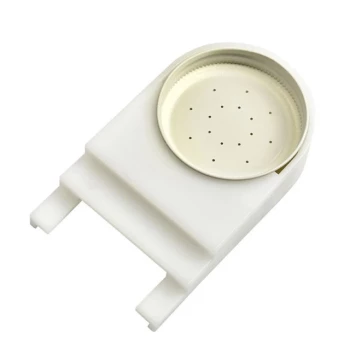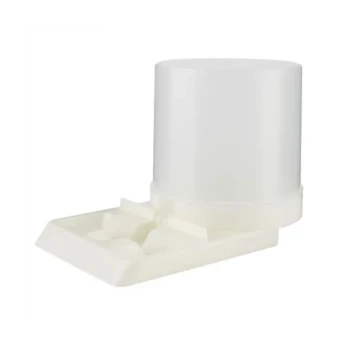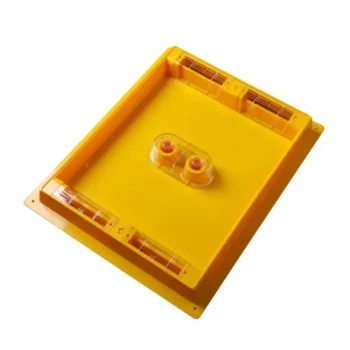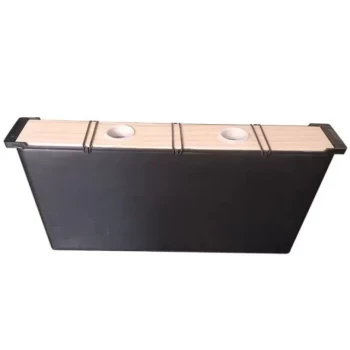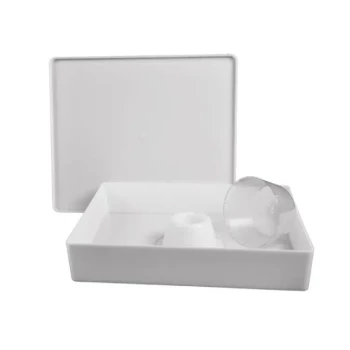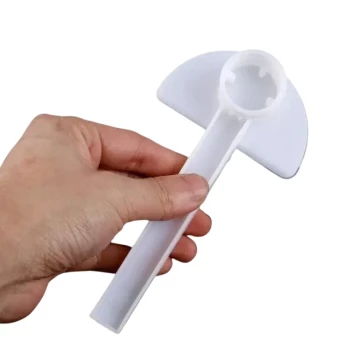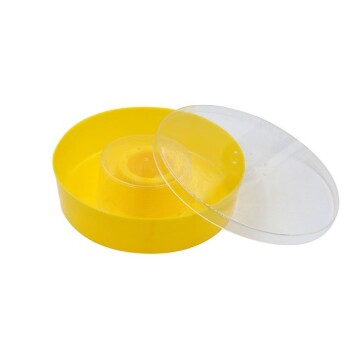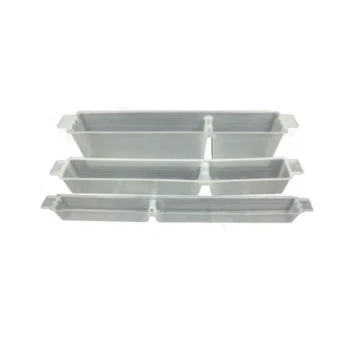The best feeder for your honey bees depends entirely on your specific goals, the season, and the number of hives you manage. There is no single "best" option, but rather a best fit for a given situation, with the main types being top feeders, frame feeders, and entrance feeders.
The core principle is to choose a feeder that maximizes capacity for your needs while minimizing risks to the colony, such as drowning, chilling the brood, or inciting robbing from other hives. For most situations, top feeders provide the best overall balance of safety and efficiency.
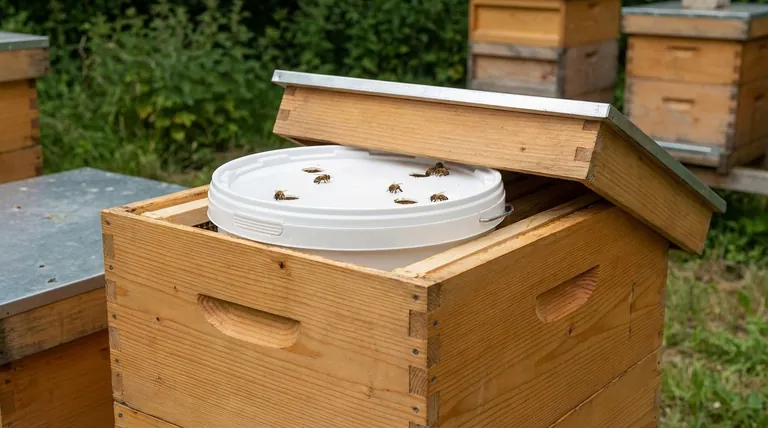
A Breakdown of the Three Main Feeder Types
Choosing the right feeder requires understanding the fundamental design differences and how they impact your bees and your workflow.
H3: Top Feeders (e.g., Miller Style, Buckets)
Top feeders are placed on top of the uppermost hive body, directly under the outer cover. They come in various forms, from custom-molded plastic trays to simple buckets with small holes in the lid.
These feeders hold a large volume of syrup, making them the standard choice for serious fall feeding to build up winter stores.
Because the syrup is enclosed within the hive's structure, top feeders significantly reduce the risk of attracting robber bees from neighboring colonies.
H3: Frame Feeders (In-Hive Feeders)
Frame feeders, also known as division board feeders, are thin plastic containers shaped exactly like a frame. They are placed inside the hive body, taking the place of one or two frames.
This design offers the absolute best protection against robbing, as the feed is located deep within the hive.
However, they have a smaller capacity than most top feeders and require you to fully open the hive to refill them, which can be disruptive to the colony.
H3: Entrance Feeders (Boardman Feeders)
Entrance feeders are the most common type seen in beginner kits. They consist of a small platform that slides into the hive entrance, holding an inverted jar (like a Mason jar) of syrup.
Their main advantage is convenience; you can see the syrup level at a glance and refill the jar without disturbing the bees at all.
However, their placement at the entrance makes them a major magnet for robber bees and wasps, which can lead to the destruction of a weak colony. Their small capacity also makes them unsuitable for serious feeding.
Understanding the Critical Trade-offs
Your choice of feeder is not just about convenience; it directly impacts the health and safety of your colony.
H3: The Pervasive Risk of Robbing
Robbing is when bees from stronger hives attack a weaker one to steal its honey or syrup. It is a violent and often fatal event for the colony being robbed.
Entrance feeders are the primary cause of robbing incidents. The external food source is a beacon for foragers from every hive in the area. Once started, a robbing frenzy is incredibly difficult to stop.
H3: Preventing Unnecessary Drowning
Bees can easily drown in open pools of syrup. Frame feeders and some top feeders can become death traps without the proper precautions.
Always choose feeders that have built-in ladders, floats, or screened-off sections that allow bees to access the syrup without falling in. This is a non-negotiable safety feature.
H3: Matching Capacity to Your Goal
The amount of syrup a feeder holds should align with your purpose.
For stimulating a small colony in spring, a smaller frame feeder is adequate. For preparing a full-sized hive for winter, you need the large volume of a top feeder (like a 2-gallon bucket or Miller feeder) to avoid constant refilling.
Making the Right Choice for Your Goal
Select your equipment based on a clear objective for your apiary.
- If your primary focus is overwintering a few hives: A screened Miller-style top feeder offers a great combination of safety and capacity.
- If your primary focus is large-scale or commercial feeding: Using 2-gallon buckets with small holes in the lid is the efficient, industry-standard method.
- If your primary focus is stimulating a very small new colony: A frame feeder is the safest option to prevent robbing, though it requires more frequent checks.
- If your primary focus is absolute convenience for minor feeding: An entrance feeder can work, but you must be extremely vigilant and ready to remove it at the first sign of robbing.
By matching your feeder to the colony's needs and the potential risks, you provide essential support that helps your bees thrive.
Summary Table:
| Feeder Type | Best For | Key Advantage | Key Risk |
|---|---|---|---|
| Top Feeder | Fall feeding, overwintering | Large capacity, low robbing risk | Potential for drowning if not designed properly |
| Frame Feeder | Small/new colonies | Excellent robbing protection | Smaller capacity, disruptive to refill |
| Entrance Feeder | Minor, convenient feeding | Easy to check and refill | High risk of robbing, small capacity |
Equip Your Apiary with the Right Feeders from HONESTBEE
Choosing the correct feeder is critical for colony health and productivity. At HONESTBEE, we supply high-quality, durable beekeeping feeders and equipment designed for the needs of commercial apiaries and beekeeping equipment distributors. Our wholesale-focused operations ensure you get reliable supplies to support your bees safely and efficiently.
Ready to optimize your feeding strategy? Contact our team today to discuss your needs and explore our product catalog.
Visual Guide
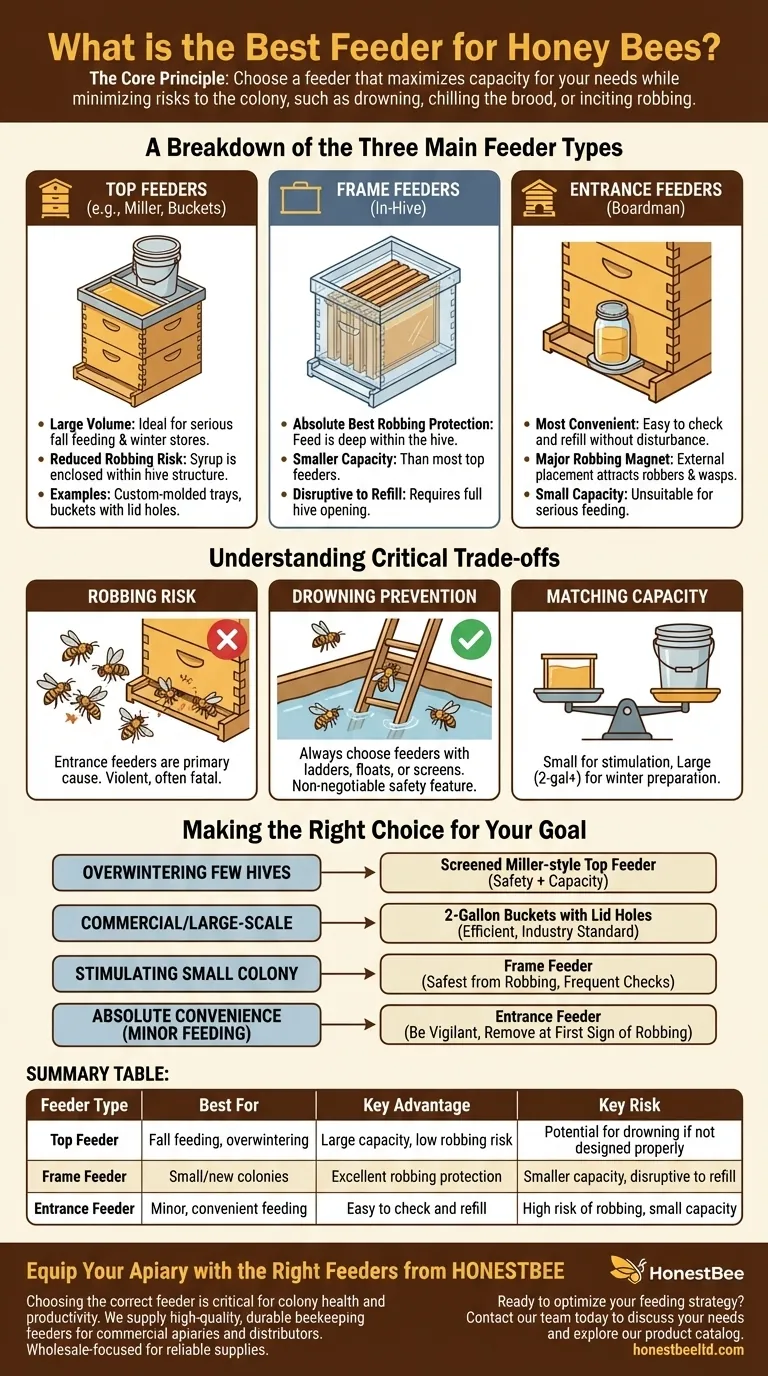
Related Products
- Boardman Entrance Bee Feeder Durable Galvanized Steel and Wood Construction for Beekeeping
- Professional Hive Front Entrance Bee Feeder
- Classic Boardman Entrance Bee Feeder Hive Front Feeding Solution
- HONESTBEE Entrance Bee Feeder Professional Hive Nutrition Solution for Beekeeping
- Professional Hive Top Bee Feeder for Beekeeping
People Also Ask
- Are entrance feeders good for bees? Prioritize Hive Health Over Convenience
- How does an entrance feeder work? A Guide to Its Simple Mechanics and Risks
- What are the different types of feeders available for beehives? A Guide to Entrance, Hive-Top, and Frame Feeders
- How does a bee entrance feeder work? A Simple Guide to Convenient Hive Feeding
- How do you make an entrance feeder for bees? A Guide to Safe & Effective Hive Feeding


